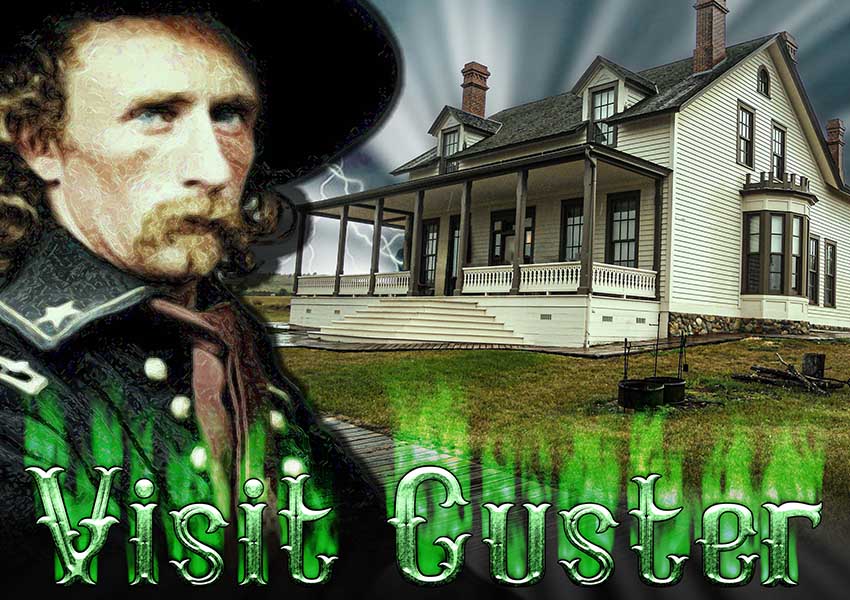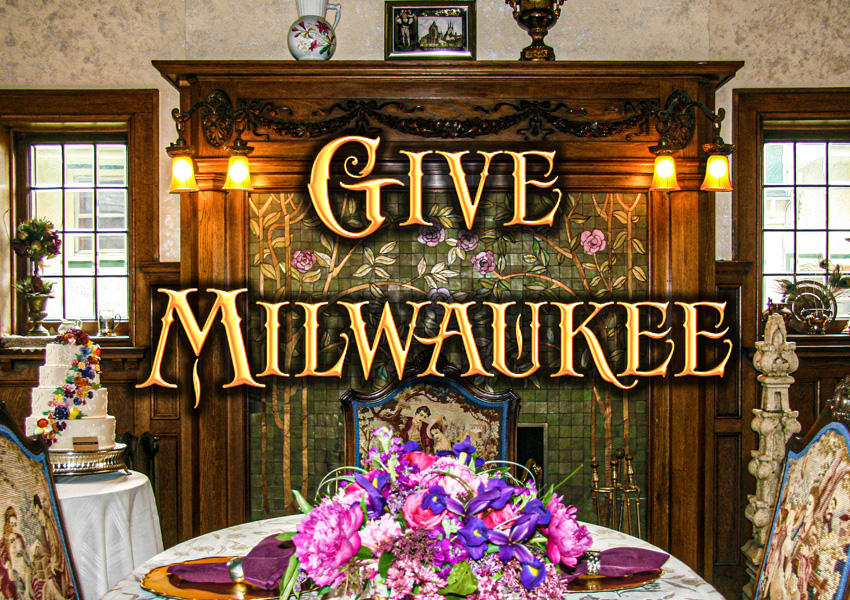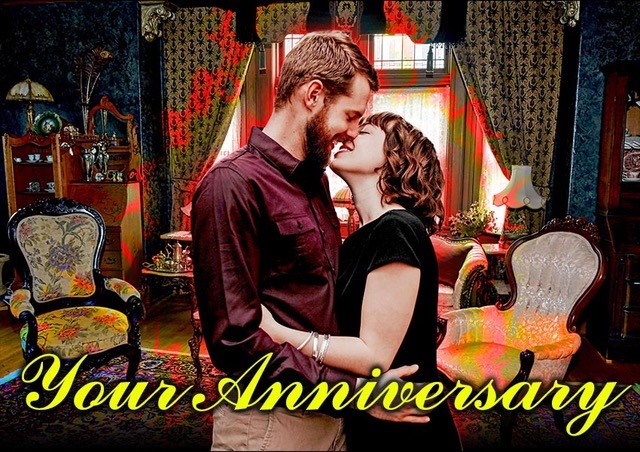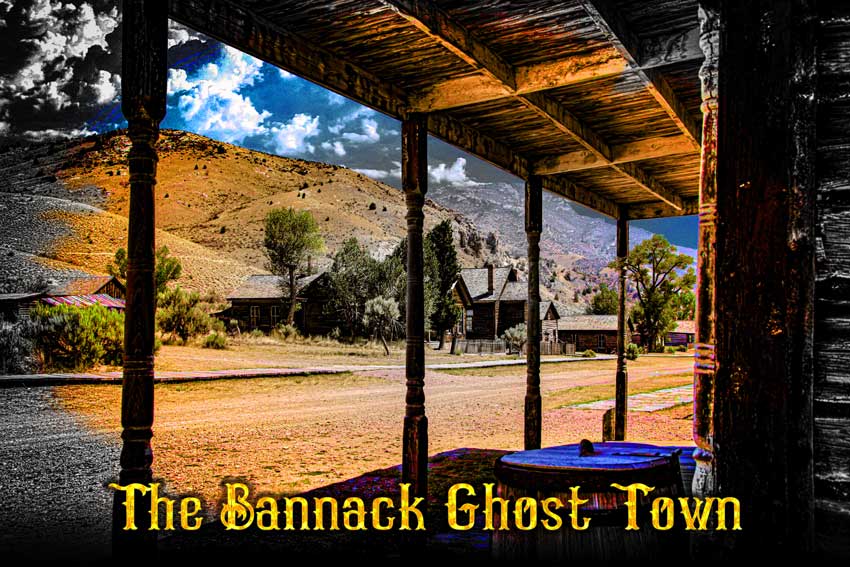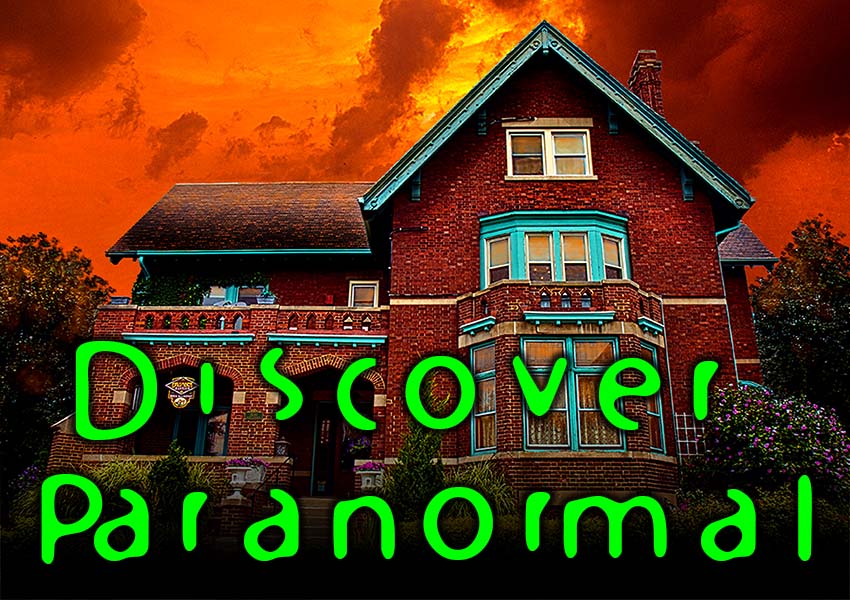Columbus Mississippi
Weaver/Errolton Mansion
An appreciative female spirit found a unique way
to show current day owners her approval.
DESCRIPTION
The 1854 Weaver/Errolton Mansion has been described by NRHP as “a square, two-story, townhouse of wood frame construction with a low-pitched roof and four interior chimneys with corbeled caps.”
Many people of the time had a business farm/plantation in the country and a residence in the city, because there were no fast forms of transportation in the 1800s. Thus, the concept of “townhouse” was a popular one. The Weaver Errolton Mansion was a most beloved mansion by several families who lived there.
It is not the usual large townhouse, however; but a glorious expression of one man’s blessings and wealth that uses a novel architecture for the time; “a unique synthesis of classical Greek form with romantic Gothic detail.”
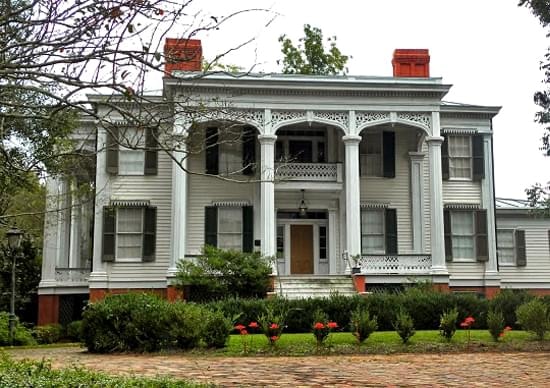
It has a fantastic curb appeal. The exterior of this top drawer 1854 Gothic Revival townhouse that was a mansion is quite impressive as it sits back regally from the street. The visitor sees “six soaring fluted columns, and delicate arches across the roof of the front verandah. A railing around the second-story balcony is decorated with carved trefoils and interlacing jigsawed woodwork.”
The original owner is forever remembered in the front yard of this impressive mansion. A handsome statue of its builder, William B. Weaver stands in the front yard, and Weaver’s original, wrought iron fence “still is surrounding the mansion; stands regally in front of the home.
Slave/Servant’s houses were also built on the property. Apparently, the Weavers freed their slaves before or during the Civil War and hired them as servants instead. Kudos for the Weavers!
The inside is just as glorious, with fifteen foot ceilings and lovely woodwork and fireplaces. The grand staircase must be something to admire. Like many homes of the time, the common rooms and kitchen is on the first floor, and the bedrooms are on the second floor. Bathrooms were added for modern era residents, probably in the room’s closets. There probably is a ballroom space in the attic.
The highlight of the mansion on the first floor are the twin parlors;(north and south) that showcase dazzling chandeliers that reflect in twin pier mirrors. This was and must be a beautiful place to entertain the 1850s’ Columbus upper crust and modern day events as well today.
The ceiling is decorated with lovely plaster medallions of acanthus leaves. Other lovely touches include louvered blinds that are fastened with original fixtures to the clapboard side wall. Side and transom lights around entrance and balcony doors are composed of ruby-colored, Bohemian glass.
HISTORY
The original townhouse that was built on this property in 1840, was the Alfred R Wolfington Townhouse, that unfortunately had a fire that partially destroyed the house in 1950. it was put on the action block in 1853, and the wealthy planter, William B. Weaver, saw the possibilities and bought the property for 2,000 dollars; quite a boatload of money for the time. William Weaver could see the possibilities for this huge fixer-upper property, and came up with grander plans for his forever home here than the original 1840 Wolfington Townhouse.
The next year, in 1854, William B. Weaver built his forever mansion here, calling it The Weaver Place. It became the grand abode that fully expressed the wealth of this very successful planter William B. Weaver and his family and slaves/servants: wife Ellen, their two slaves turned servants: Tellula Weaver and Mary Weaver; and their 3 children: Son William E. Weaver; Sept. 20th 1853 – DEC 19 1884, daughter Nellie Weaver; 1856 -1935, and son Blanchard Weaver; Nov. 26 1858-JAN 18 1919.
However, William and Ellen Weaver didn’t see why two perfectly damaged Wolfington House rooms couldn’t be repaired, remodeled and be a part of their new forever home. Apparently, the Wolfington Townhouse’s dining room and kitchen were in salvageable shape. The smoke and water damage was repaired, and the rooms were revamped, and redecorated in the style that pleased the Weavers. One couldn’t tell at the end that they were from the former house.
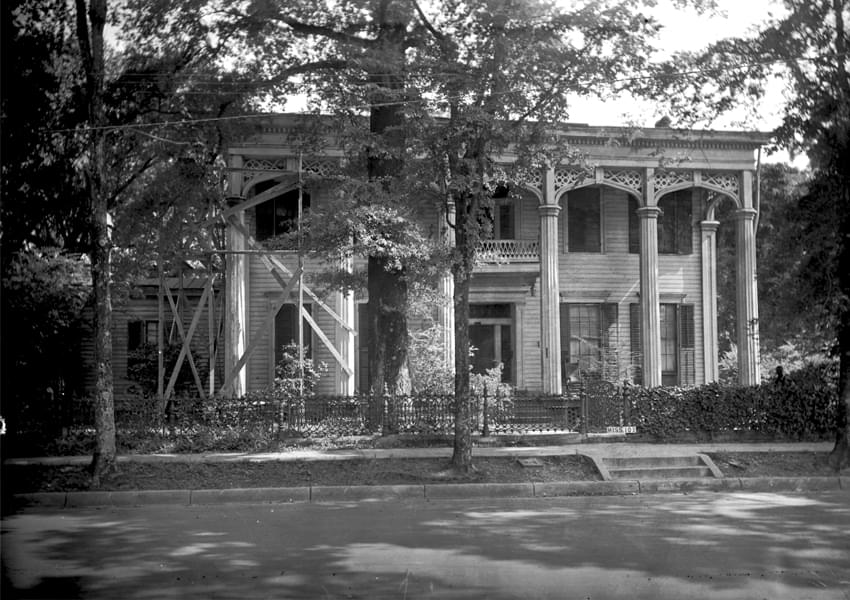
This custom to build around and or incorporate the older parts of a house into the new structure was a common practice in early America. The remodeling of homes throughout the coming eras continued to change original structures into dream homes.
Luckily, this mansion as well as many other antebellum homes, weren’t destroyed from the Civil War because Union Troops were stopped from entering the city of Columbus by Forrest’s soldiers during the Civil War. Weaver Place may have been a place for wounded soldiers to recuperate, as Columbus was deemed to be a hospital city.
After the Civil War; during Reconstruction, William B Weaver may have had to pay a huge restitution fee that southern property owners had to pay in the southern states as a penalty to the government; perhaps curtailing Weaver’s fortune. Plus, while there was great need to replant his farm/plantation, not much money was available for seed money. Mr Weaver obviously recreated/ dreamt up a way to make a living, having a creative mind; not one to give into hard timers.William Weaver was able to keep the mansion for thirteen more years.
William B. Weaver’s only daughter, Nellie Weaver grew up to be an outgoing, talented woman who lived with her parents and family in Weaver Place. Though Nellie had many suitors, she fell in love with a fireman, Charles Tucker, and married him in 1878,before her father died in December 1878. After her wedding,William B. Weaver died on December 21st, the same year at the age of 60 and was buried Friendship Cemetery, Columbus, Lowndes County, Mississippi. His daughter, Nellie, inherited Weaver Place. Her mother, Ellen liked there with her until she died around the turn of the century.
At first, Nellie and Charles lived in marital bliss; enjoying their lives together. She was so blissfully happy, that she carved her name, “Nellie”, on the window glass of the south parlor. After a few years had gone by, Nellie and Charles had a new daughter, Ellen, naming the baby after Nellie’s mother, Ellen. Unfortunately, after the birth of Ellen, Charles became unhappy and left Nellie and his daughter Ellen; disappearing. Instead of going through a divorce, men would just disappear and start a new life and perhaps a family out in the West.
Nellie wasn’t about to sell the beloved, forever family home; a place that she and her mother loved. To support herself and her daughter, Nellie started a small private school, and became a teacher. This endeavor brought in some money to live on, but not really enough maintain this huge, impressive structure. Because of a lack of money, this once grand mansion slowly slipped into disrepair. Apparently, her brothers weren’t able to help monetarily, but they probably did the repairs they could handle.
Eventually, Nellie’s daughter, Ellen married a nice young man, and moved out. After her mother died, Nellie lived there happily by herself until she was eighty, until she died on June 13th, 1935 in an unfortunate accident. Nellie received fatal burns when her dress caught fire from sparks coming from the fireplace in the rear parlor.
The Weaverly Place stood empty of residents for fifteen years. Luckily, this mansion was well built and had excellent bones. The mansion was rescued from its state of disrepair when in 1950 Mr. and Mrs. Douglas Bateman fell in love with this property and bought Weaver/Errolton Mansion, despite knowing that this property is an expensive fixer upper opportunity. They purchased they find from William B. Weaver’s grandchildren; Nell K. Wall and Walter Weaver Kennedy. Mrs. Bateman renamed the mansion; Errolton, in honor of her Scottish ancestry. The Weaver Errolton Mansion was added to NRHP on November 16th, 1978.
At some point, Mrs. Bateman’s granddaughter, Gaines Bateman Gaskin bought her family’s beloved forever home; Weaver Errolton Mansion from her grandmother, around 2005. Gaines Bateman Gaskin also bought out the shares of her siblings. Gaines Gaskin and her family continued to restore this huge mansion.
The Weaver Errolton Mansion is a Columbus treasure and apparently is still a private, adored residence for Mr. and Mrs Bateman’s descendants. It hasn’t been turned into a mansion museum, or inn or any other kind of commercial business. They apparently love this mansion as much as an earlier owner, now in spirit-form and also residing there.
HISTORY OF MANIFESTATIONS
The Spirit of Nellie Weaver is the home’s spectral resident. There are several reasons why she is still here. People who love their special place in this world, sometimes return to it after they experience a quick, unexpected death. Nellie died suddenly after her skirt caught fire from sparks from the back parlor fireplace.
Women who suffer a loss of a love one; either by death or abandonment, sometimes like to linger in the place where she last saw him, still waiting him to join her or see the error of his ways and return.
Nellie was abandoned by her husband, Charles Tucker, just after the couple gave birth to their daughter, Ellen. He couldn’t handle being a father, or perhaps he found another woman.
When a fixer-upper opportunity is bought and restored to its original luster, spirits who loved the place will be activated to once again enjoy their favorite place in this world.
The mansion was rescued in 1950 from its state of disrepair by the Batemans who fell in love with the mansion. Grandchild Gaines was the next owner who continued in the restoration process. Living owners of a property sometimes are reminded that they have spirit people among them in a variety of ways, and the feelings of these spirit people concerning how the living are caring for their property are expressed in physical activity. The spirit of Nellie has made herself known in a variety of ways throughout the years.
MANIFESTATIONS
The Re-etched Window Pane
Fortunately, renovation of this once beautiful home started in the early ’50s by Mrs. Bateman and was completed by the mid – fifties. Sometime during the restoration period, a workman leaned a ladder up against the window that Nellie has etched her name in, and accidentally broke it. The window was replaced with another pane of glass. A piece of history was thought lost. Mrs Bateman had seen the window with Nellie’s name etched on it.
Some years later, after the mansion had basically been returned to its former glory, Mrs. Bateman started to add her own touches inside. She put a lovely sofa under a window in the south parlor.
One day, when she was about to close the south parlor curtains, because of bright sun was shining on the sofa, Mrs. Bateman suddenly noticed something that hadn’t been there the other day. In the replaced window pane, she saw the name, “Nellie” once again scratched in the same place, in the same handwriting that the original scratching had been in. It had been done from the inside.
The spirit of Nellie is letting the Batemans know how happy she is that they restored her beloved home, and that they also love her mansion too.
The Spirit of Nellie
Throughout the years, Gaston has reported there have been incidents attributed to the resident spirit, Nellie.
As spirits are fascinated with electricity, perhaps Nellie has played with the lights or turned the tv set on and off.
Perhaps doors and windows open and shut by themselves.
In 2005, after waxing the back parlor floor, small ghostly footprints were noticed that lead to Nellie’s window.
She is reported as being playful; always in a good mood with no regrets.
Perhaps she calls out names of the people living there.
She may rearrange items or take them for awhile and then return them.
One day when a workman was on a ladder, rolling wallpaper on the wall in the parlor, he felt his ladder suddenly rock from side to side.
STILL HAUNTED?
Most Probably so! For years, the spirit of Nellie has been a playful, positive, happy spectral resident; still enjoying her forever home, enjoying her memories and perhaps getting some harmless chuckles letting the living know how much she appreciates the restored mansion and the family who also adores this property.
Since the family knows already who is keeping them company, why would they let paranormal investigators in to annoy their happy spirit person?
Personal experiences have been regular, plus physical experiences like the etching of NELLIE on the new window pane, and the footsteps in wax, plus other incidents have happened to the residents and their employees.
I couldn’t find any hard evidence caught by investigators shared publicly on-line.
LOCATION
Weaver/Errolton Mansion
216 3rd Avenue, South,
Columbus, MS
The Weaver/Errolton Mansion is located just north of downtown Columbus, Mississippi, about a block east of the Tennessee Tombigbee Waterway.
SOURCES INCLUDE
- lareecarucker.com
- apps.mdah.ms.gov – NRHP
- More details NRHP – en.wikipedia.org/wiki/Weaver_Place
- cdispatch.com
Our Haunted Paranormal Stories are Written by Julie Carr






